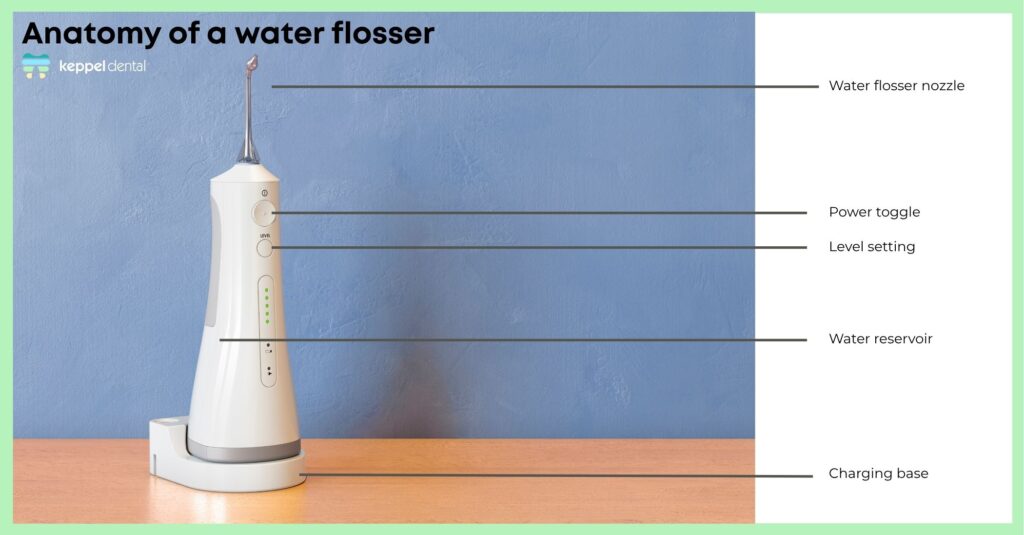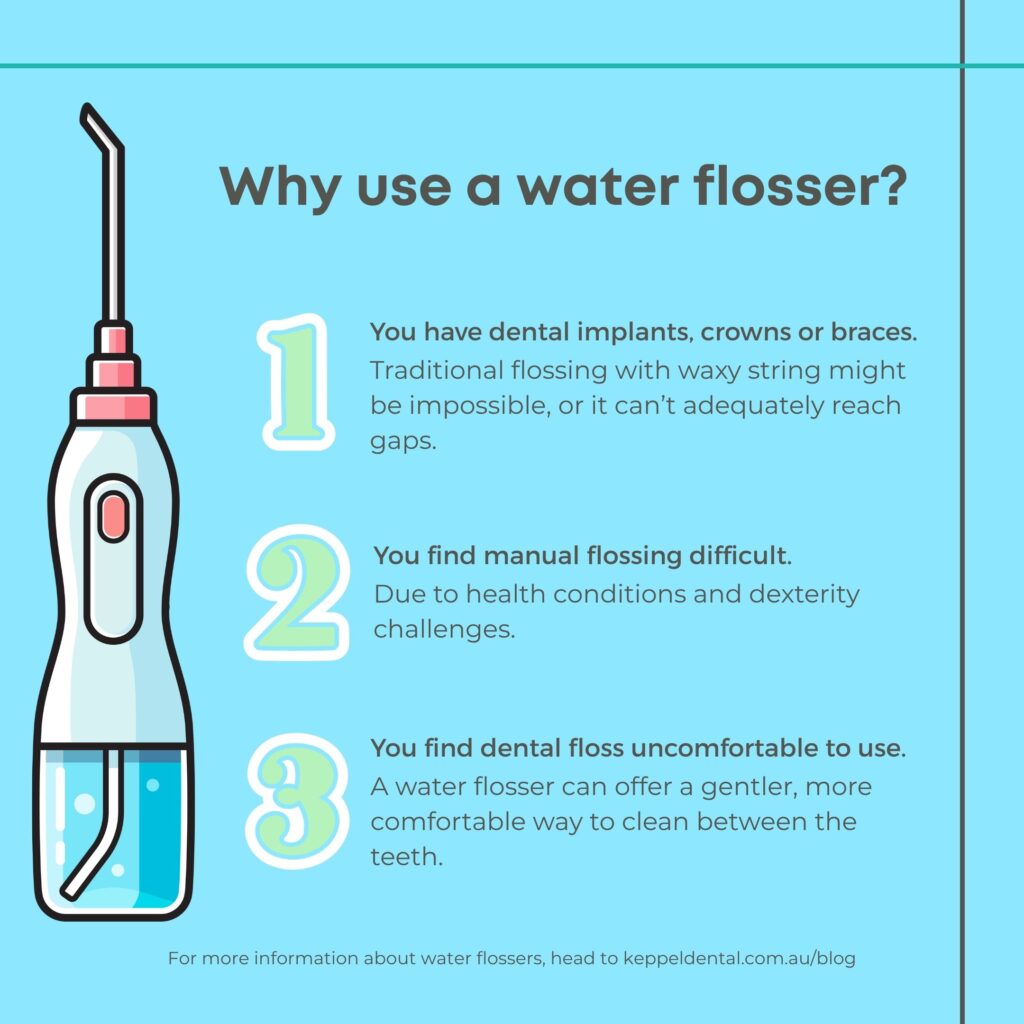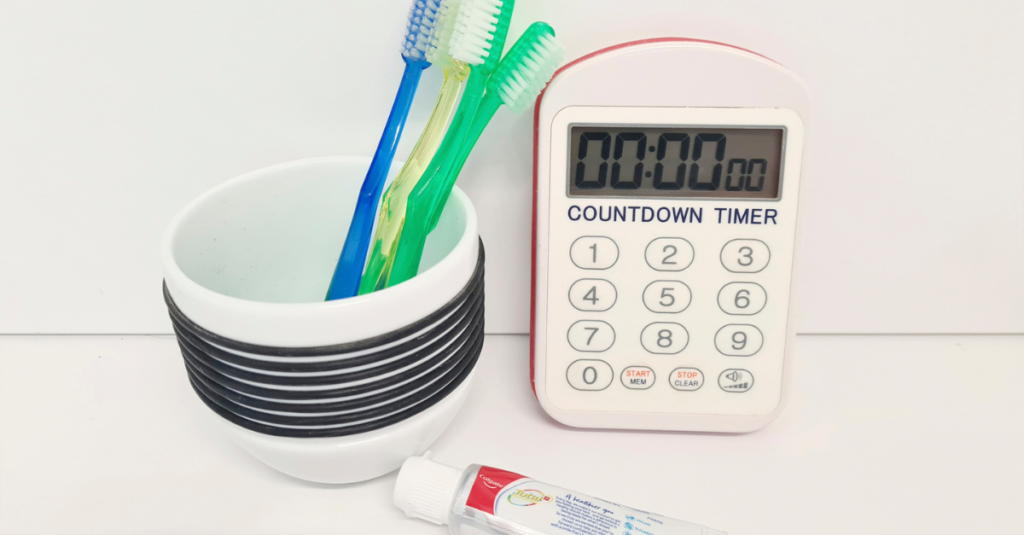A while back I was nerding out to a non-dental industry friend about the progress of dentistry technology. He was impressed that we can mill crowns using a 3D printer, take highly detailed mouth scans in minutes, and use AI dentistry to plan and predict entire treatment plans.
Once I’d finished my spiel, he said with bemusement and an exasperated expletive or two, “Yet every day, we’re still using a bit of string to clean our teeth.” He had a point.
Water flossers have hit the mainstream thanks to social media influencers and some nifty design refinements. And although they look like a much-needed evolution in flossing, here’s the surprising thing: water flossers have been around since the 70s. I didn’t have the heart to break this news to my friend.
Flossing is fantastic for your teeth
Given that you got here by searching for water flossers and how they work, you’re probably already sold on the benefits of flossing. But in case you’re still on the fence, here’s a reminder.
Flossing cleans tooth surfaces that brushes can’t reach, helping to remove food and break down plaque-building bacteria. If food and bacteria aren’t regularly cleaned away, a sticky, fuzzy film can form, leading to gingivitis or, in serious cases, periodontal disease.
The latest research from the Australian Dental Association (ADA) has found that using string floss and brushing reduces the risk of periodontal diseases by up to 50%. We’ll reveal how this stacks up against water flossers in a minute.
What are water flossers and how do they work?
A water flosser is a cordless, electric, handheld device. Its mission—like any flossing device—is to clean between the teeth and along the gumline.
To use a water flosser, start by filling the tank or reservoir with warm water. (Bathroom tap water is fine.)
Next, attach the nozzle that’s best suited for your mouth. There are ones designed specifically for cleaning around braces and bridges for example.
Turn it on and a steady stream of water jets out of the nozzle. Follow the manufacturer’s instructions for your specific flosser on how you should move it around your mouth. This will give you the best results. As you point it at each tooth, the gentle water pressure will remove any food and plaque that may be lingering after you’ve brushed.
In short, think of water flossers as a pressure washer for your teeth.

Figuring out all the water flosser features
Every brand of water flosser has its own design. You may have heard of the WaterPik, widely regarded as effective and easy to use. However, large oral health brands, such as Oral B and Colgate, have their versions, too. (Even Kmart is getting in on the water flosser trend.)
It’s worth researching the different features of each water flosser to help you choose the one that’ll work best for you. Or, if you’re seeing your dentist or OHT before buying one, chat with them about which options are most practical for you.
Features you’ll commonly see mentioned in product descriptions or reviews include:
- the number of speeds, power settings, or cleaning modes
- the size of the tank and how much cleaning time this provides
- the recharging system, battery power, and total run time
- whether it’s waterproof (for use in the shower)
- its dimensions and weight
- what it’s made from.
Some write-ups may also include details about how quiet (or noisy) the flosser is, and how easy it is to clean. Product information like this can make the difference between you using a flosser or leaving it in the drawer. After all, who wants to buy an item that’s supposed to make their life easier, only to find it makes things messier and more complicated?
Reasons to start using a water flosser
There are three main reasons why you might want to start using a water flosser, or why your dentist recommends using one.

You have dental implants, crowns or braces
Traditional flossing with string might not be possible if your mouth is healing from a surgical dental procedure, such as dental implants, or you’re undergoing orthodontic work. A water flosser offers a gentler way to clean gums and provides more flexibility for cleaning behind wires and gaps.
You find manual flossing difficult
Health conditions and dexterity challenges may mean using string or interdental brushes is just too fiddly. The larger handle and body of a water flosser make it easier to move the small nozzle around the mouth.
You find dental floss uncomfortable to use
Flossing with dental string shouldn’t feel uncomfortable when you do it correctly. But that’s not everyone’s reality. For people with sensitive gums, perhaps due to medications or treatments or long-term poor oral hygiene, a water flosser can offer a gentler, more comfortable way to clean between the teeth.
Are bleeding gums a reason to switch to a water flosser?
Not necessarily. The early warning signs of a gum infection can look the same as poor flossing technique—sore gums, sensitive gums and teeth, and bleeding when brushing or flossing. If you experience this, consider booking an appointment with your dentist to get a proper diagnosis.
If it turns out that you do have gum disease or periodontal disease, then your dentist may recommend using a water flosser until it clears up. This can feel more comfortable without sacrificing your oral hygiene.
How effective are water flossers compared to string floss?
We looked at two studies into whether a water flosser is more effective than string.
The first is a small clinical study that compared the amount of plaque cleaned from teeth when using string and a manual toothbrush versus using a water flosser and manual toothbrush. The results found that cleaning with a water flosser and a manual toothbrush is 29% more effective than using waxy floss string and a manual toothbrush.
The second study was conducted by leading water flosser brand, WaterPik. Their 4-week clinical trial found that brushing and water flossing was 52% better at reducing gingivitis than traditional dental floss.
But in fact, it shouldn’t be about a competition or choosing one method over the other.

Improve oral health by combining traditional flossing and water flossing
Unless there’s a medical reason for not using string floss—you’ve suffered mouth trauma or have dexterity challenges—most dentists (ourselves included) wouldn’t recommend abandoning string floss.
The current thinking among dentists in Australia is that a combined approach will serve you best.
- Use a string floss first to remove food and break down plaque-building bacteria that are lingering around the teeth.
- Brush your teeth to give them a good clean.
- Finish with a gentle water floss to remove any last remaining bits that your toothbrush couldn’t reach.
Ready to revolutionise your oral health care?
The best way to work out if a water flosser is right for you is to talk to your dentist or oral health therapist at your next appointment. They may have experience or knowledge of the best water flossers and can point you towards a device that will best suit your needs.
In the meantime, if you’re looking for more information about how to improve your at-home oral health routine, you may find these articles helpful.

